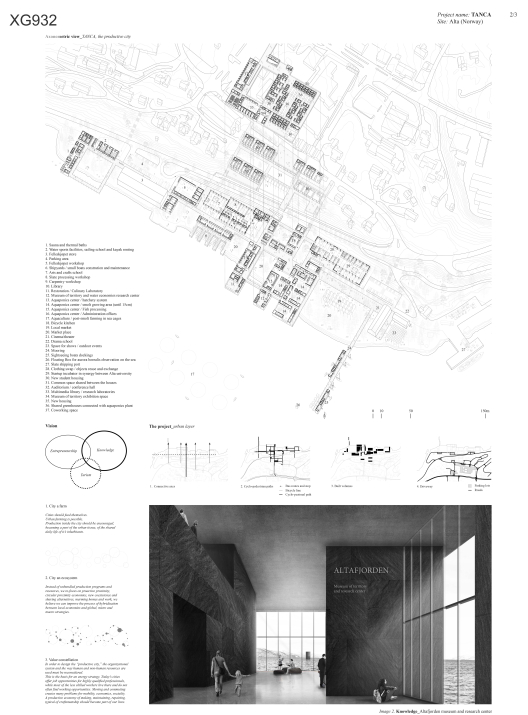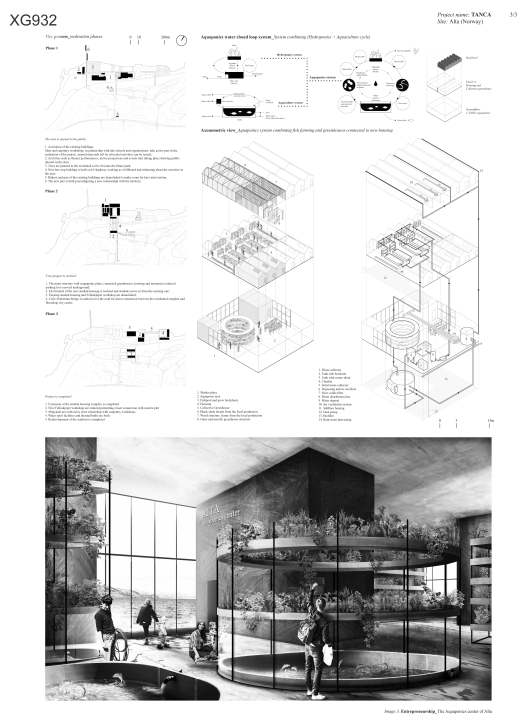Project:
Tanca
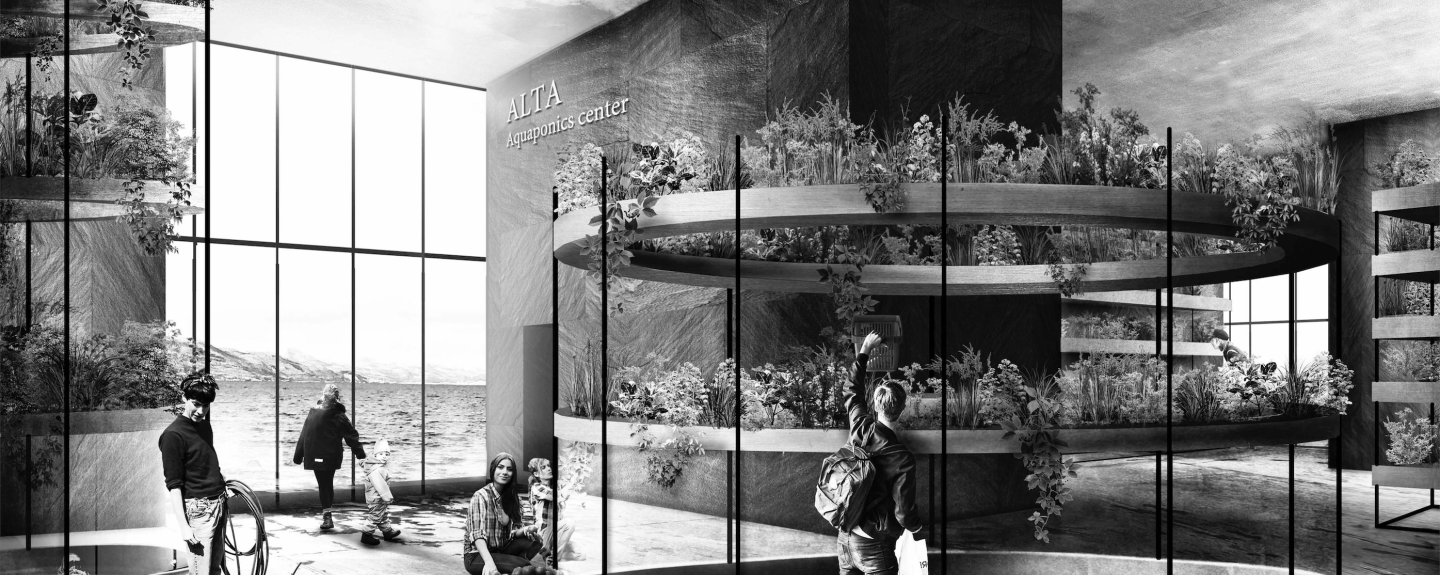
About
-
Located far beyond the Arctic Circle on the banks of the Norwegian Sea surrounded by the spectacular landscape of the fjords, the town of Alta hosts Tanca our Europan 14 proposal. More precisely, the proposal is based in the neighborhood of Bossekop, which thrives on fishing and craftsmanship, especially on traditional carpentry and slate processing. The word Tanca means big container for water or other materials. Conceiving the town as a container of community synergies, Tanca hosts Bossekop inhabitants favoring the implementation of an alternative lifestyle in which social development is mainly centered on co-operative models based on a highly experimental aquaponic system which combines fish farming and agricultural production in greenhouses around which the residential pattern develops. An urban vision, in which the introduction of agricultural production opens new job opportunities, favors social interaction and allows more efficient recycling, with the aim of improving people’s lifestyle.
Bossekop is an ancient Sami trading post and marketplace, so we kept the historical essence of the place by improving community trading, local production and the relationships between producer and consumer through the prism of long term sustainability. Our model of multifunctional eco-buildings which integrates aquaponics systems and collective greenhouses to the residences is designed to be managed by farmers, residents and volunteers. The systems generate enough food for the families and to sell organic fresh product in the market place which is directly connected to the site so no motorized transportation is needed. The main idea is that people can have the freshest harvest possible when they buy or order the product. Atlantic salmon and trout can be grown in aquaponics as well as other varieties of fish, such as Nordic tilapia, in different pools which would bring more diversity. Finally, productive city design cannot be disconnected from the identity of the site. Analyzing the history to understand the present situation and using the potentialities to give the next generation the best possibilities is our goal. Tanca is a productive city because we fill the big container with materials by improving industrial and artisanal production, ideas by developing research, experimental systems and educations, and possibilities to let the future inhabitants to decide how their city will work.
-
The project Tanca proposes a transformation strategy that densifies Skiferkaia in three phases. The proposal works with the connections to the water structurally and programmatically. The urban scheme works with connections to Bossekop, and it has a clear relation to the waterfront.
The big variety of programmes presented in the project can be seen as an opportunity for the municipality to engage in a dialogue that evaluates possible future activities at Skiferkaia with possible collaborators in Alta. The project suggests complementary programmes related to the seafront that aims for a productive profile. It focuses on a cultural, economical and environmental development that benefits entrepreneurship, knowledge-based industry and tourism.
The representation of the future development at Skiferkaia is con- vincing in how it translates the landscape and architecture. This is evident in the different scales of the project; from the interpretation of the large scale and territory, to its proposal in a smaller scale, like the interior of the Aquaponic Center. It presents in a minimalistic way both a sensibility and a capacity to explain technical processes for urban development and productive processes.
Even if the representation of the project is appealing, the jury questions the proposed masterplan. The masterplan reveals a limitation in the understanding of the context, as such density will contribute to the urban sprawl in Alta. The jury suggest that the team evaluates their proposal in dialogue with the site representatives, and validates primary and secondary programs. Which parts of the site has the biggest potential to be built, and which parts are to be let open for the future unknown?
-
Team Representative: Pietro Colonna (IT) – architect
Contributors: Maureen Soupe (FR), Enrico Zetti (IT) – students in architectureCalle Sta. Maria de Gracia Pastrengo 9, 41004 – Sevilla (ES)
+34 674739429 – PietroColonnaArchitect@gmail.com – www.pietrocolonna.it
P. Colonna, E. Zetti & M. Soupe
Team interview
1. How did you form the team for the competition?
We met "on the road", in different moments and circumstances of our journey. A fortuitous meeting had us seated around the same table. We talked a lot and started drawing. Words were then no longer needed and what came next wasn't but a necessary consequence.
2. How do you define the main issue of your project, and how did you answer on this session main topic: the place of productive activities within the city?
Our project name is 'TANCA'. 'TANCA', in Italian means "large container of water or other materials". It immediately seemed to us to be the most suitable name to express the idea of "Productive City" we wanted to propose: a model that would start considering either tangible and intangible resources available on site (human resources above all), and able to activate integrated dynamics between work and daily life.

3. How did this issue and the questions raised by the site mutation meet?
"Tanca" aims at becoming a hub connecting the city with its territory to the mutual benefit of both and creating a common ground for identity and development of Finnmark communities . The "large container" is filled with complex activities in synergy between the inhabitants and their wonderful landscape. The project envisages the implementation of an alternative lifestyle in which social development is mainly centered on co-operative models based on a highly experimental aquaponics system, which combines fish farming and agricultural production in greenhouses around which the residential pattern develops. Bossekop is an ancient Sami trading post and marketplace, so we kept the historical essence of the place by improving community trading, local production and the relationships between producer and consumer through the prism of long term sustainability.

4. Have you treated this issue previously? What were the reference projects that inspired yours?
Each of us has had, in the course of his own path, the opportunity to get in touch with this topic. Pietro, had already developed an "idea of productive city" in the 2016 winning proposal for the Italian competition AAA Architetti Cercasi. It must be evident to everyone by now that the urban model based on industrial production is changing, at least in the Western world. Rather than among the architectural projects, our references should be sought in literature and cinema. A book we would recommend, for example, is "Alternatives Energétiques, Plaidoyer pour une autosuffisance locale" by Yona Friedman, while two great documentary films that influenced our view on the issue would be "Demain" directed by Cyril Dion and Mélanie Laurent and the unavoidable "Koyaanisqatsi: Life Out of Balance", directed by Godfrey Reggio.
5. Today –at the era of economic crisis and sustainability– the urban-architectural project should reconsider its production method in time; how did you integrate this issue in your project?
We have thoroughly examined this absolutely crucial aspect. The whole project idea has in fact been conceived as a process. This is evident within the schemes that highlight the various stages of Tanca's development. The participatory mechanism has been considered since phase 1. It must be said that our masterplan contains an intrinsic value. The design of the new neighbourhood's axes integrates existing buildings with new ones into an urban system flexible both at a functional and temporal level, in terms of "progress of works" in the hypothesis of a future realization.
6. Is it the first time you have been awarded a prize at Europan? How could this help you in your professional career?
Yes, this is the first time we have received an Europan award. In fact it is also the first time we participate and we are happy to see that our work has been appreciated. We still do not know how all this might help us in the near future, the most honest answer that comes to our mind is "let's see".
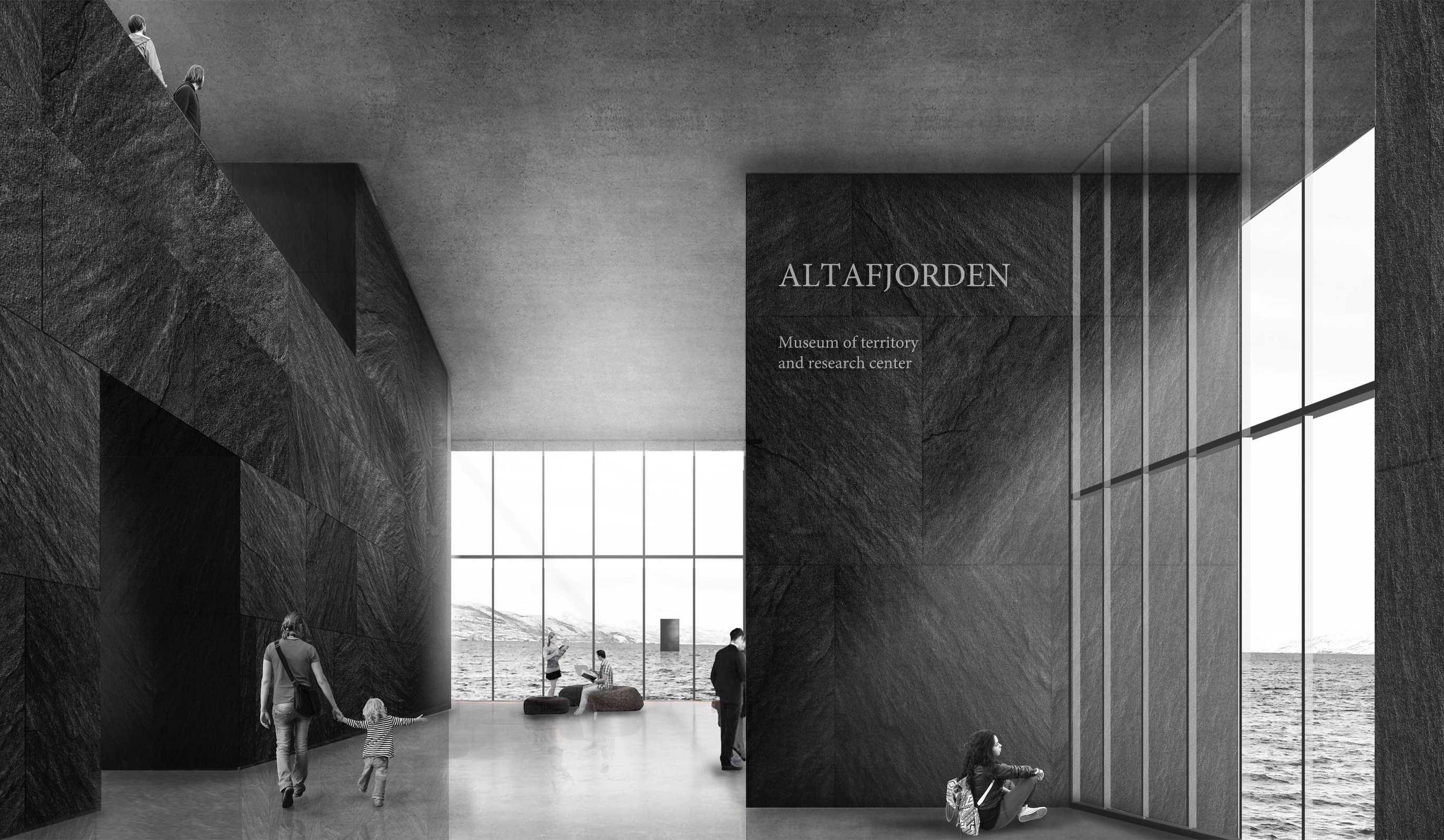
Related projects
-

Tanca
We fill the big container with materials by improving industrial and artisanal production, ideas by…
-
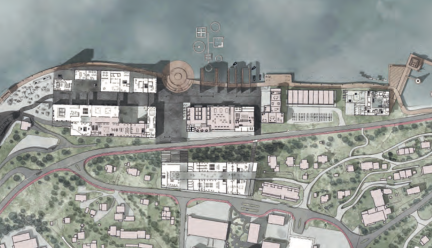
BUSY BOSSE!
This entry examines the importance of human interactions and net- works that comes with a diverse…
-
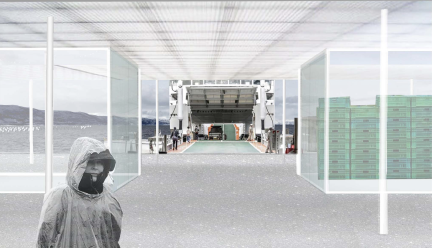
Hydro-Therapy
It’s time to focus back on the sea and find a symbiotic relationship between tourism and maritime…
